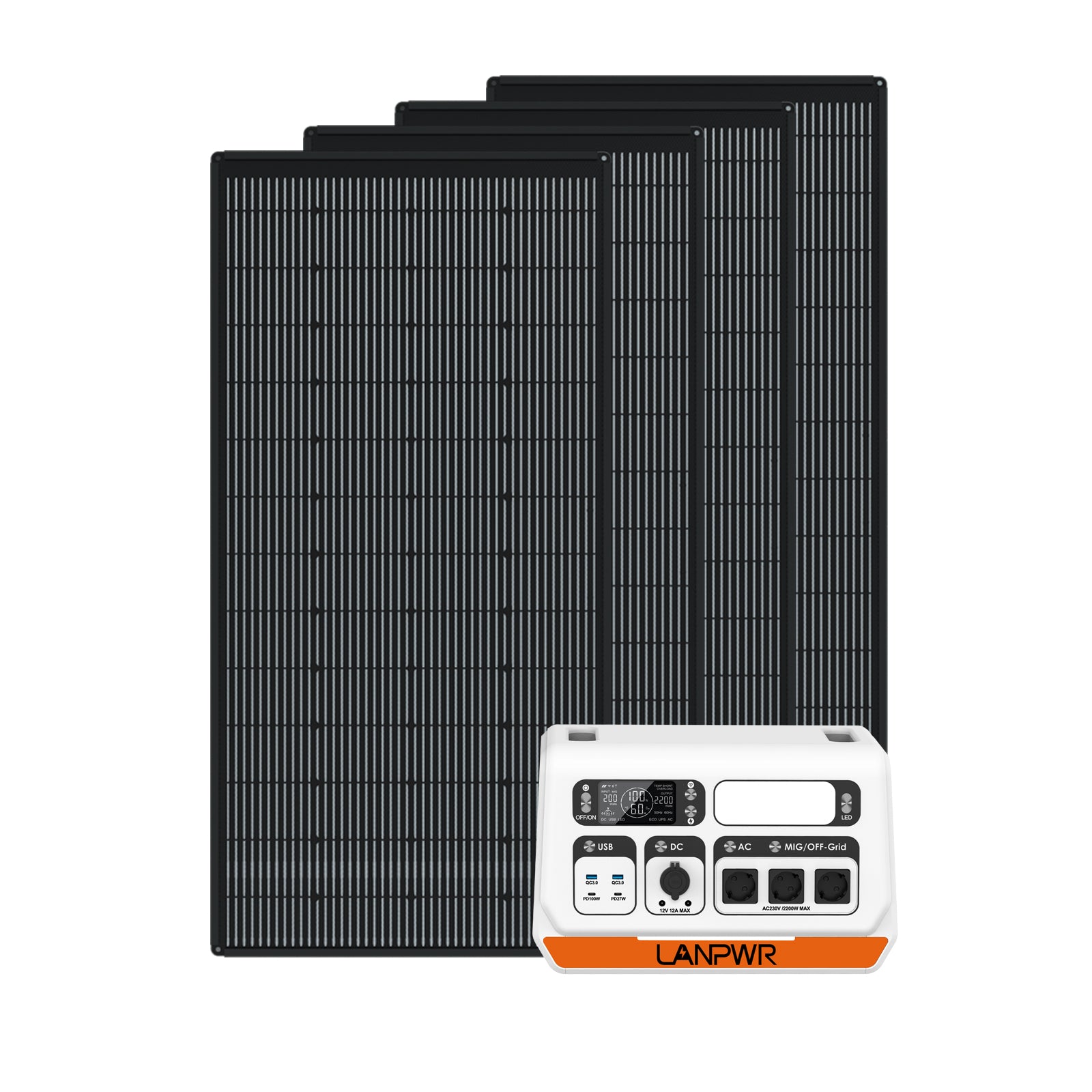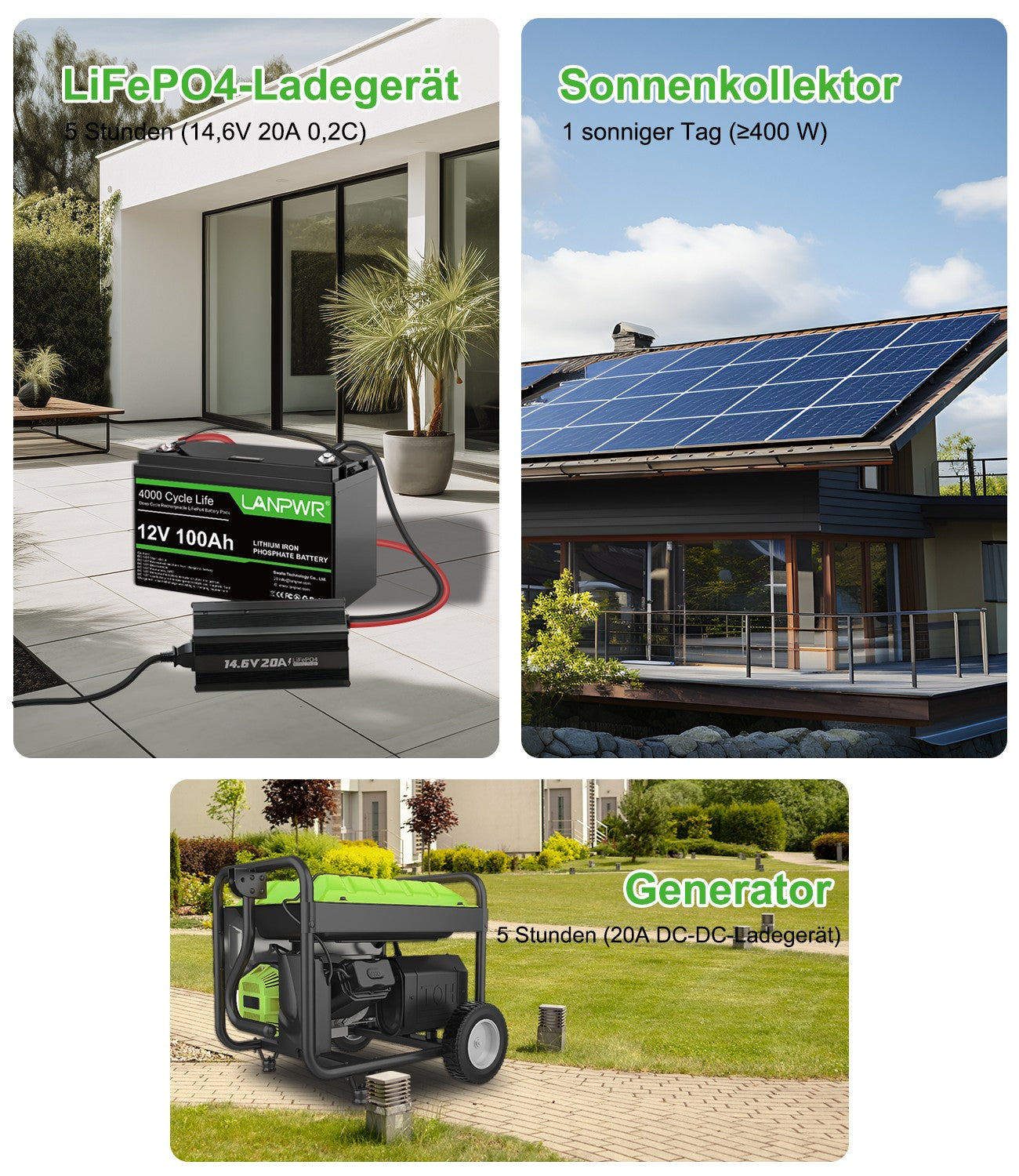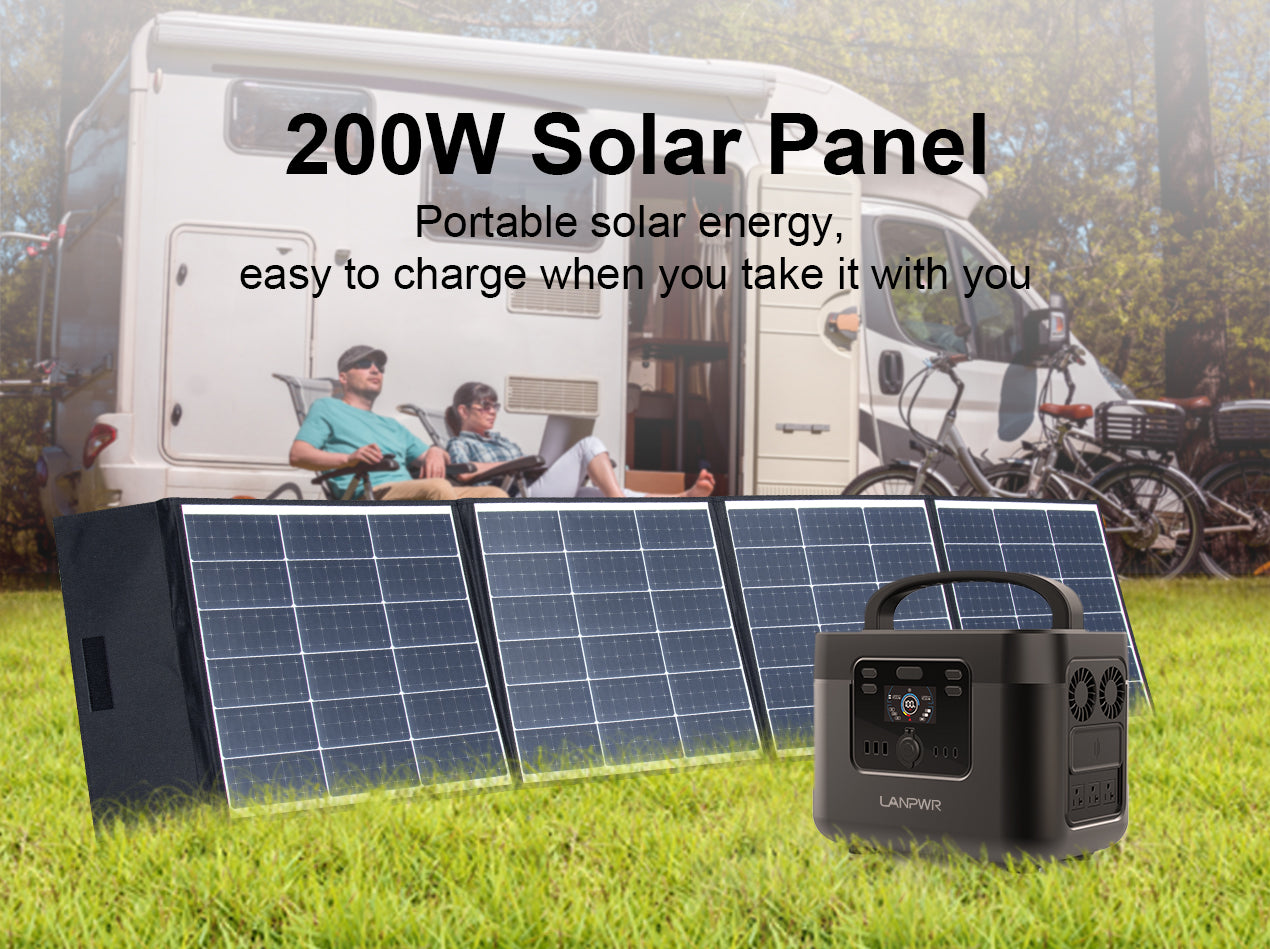Utilizing solar panels is a great way to tap in renewable energy, and reduce your electricity bills and carbon footprints. Nevertheless, winter presents certain obstacles which can cause solar panel efficiency to deteriorate. The winter months come with shorter days, lower sun angles, and possibly snow cover that can add up to reduce the amount of energy harvesting possible from your Lanpwr solar panels. In this article, we will review the different ways how you can increase the solar energy production of your Lanpwr panels even for winter!
Winter Solar Panel Problems
To start, there are several things you should know about what winter conditions mean for a solar panel and how it will affect your ability to produce electricity from it as efficiently as possible, if at all.
Diminished Sunlight Is Available: The days are shorter in winter, and there are fewer hours of sunlight.
Low Sun Angle: During the winter months, the sun remains lower in the sky which decreases the amount of sunlight that reaches the panels.
Snow & Ice Accumulation: Snow and ice cover the panels preventing sunlight from passing through, and decreasing the efficiency of the system.
Cold Temperatures: While the cold does not lower the efficiency of a solar panel, it can affect how well a solar panel system functions unless managed properly.
How to Optimize Efficiency of Solar Panels under Snow-Full Winters
Get the Right Panel Angle and Orientation
Orientation: We are in the middle of nature, so when to winter you can try a good idea angled for more sunlight exposure. The ideal angle for Lanpwr panels is +/- 15 degrees from latitude. This change ensures that the surface area is most exposed to the sun's rays when there is less daylight.
True south: Your panels will receive the most sunlight when they face true south throughout the day (in the Northern Hemisphere). This exposure orientation is really important if we want to make the most of those winter solar gains.
Regular Snow and Ice Removal
Manual Clearing: Clean snow and ice off your panels regularly to avoid blocking sunlight. You can avoid these because the surface of your panel can be damaged by rubbing them off, so always use a soft brush or better still, a snow rake for solar panels. Do not use sharp objects or abrasive materials to scratch the panels.
Heating Systems: If you can install a solar panel heater then also go for it. Some models have a snow melt system built in to keep panels clear of snow and ice While this increases the production upfront cost, it can greatly improve winter performance.
Use High-Efficiency Panels
High Efficiency Lanpwr: For the best performance in low light, choose high efficiency, high quality solar panels from Lanpwr High efficiency panels will be more efficient in capturing the limited available sunlight during short winter days.
Maximize Energy Storage
Battery packs: Match up with a high-capacity battery storage system such as the one from Lanpwr. This lets you save the extra power produced during the sunniest daytime hours and use it later when production slows down, such as on cloudy days or at night.
Smart Energy Management: Through smart energy management, you can prioritize what energy to use at selected times using the stored energy. These are systems that can selectively switch your essential loads on and off while also managing energy distribution properly.
Maintaining and Monitoring Systems
Regular Inspections - Although solar panel systems are built to last and require little maintenance, you still need to check your solar panels once in a while. Check for any wear and tear, damage, or shading from trees or nearby buildings
Power Monitoring: Monitor the performance of your Lanpwr panels with solar monitoring. If something does go wrong, monitoring makes it easy to catch and rectify the issue before you run into any performance issues throughout the winter.
Better Insulation and Energy Generation
Energy-Efficient Homes: The more energy-efficient homes you have, the less supplement with solar power you may require during winter. Ensure your home is properly insulated, windows and doors are sealed, and you are using energy-efficient equipment to reduce the overall energy usage from your home.
Energy-Efficient Appliances - Save energy by switching to energy-efficient appliances and lighting. Therefore, less energy used means the solar energy that is available to you can now stretch out more to cover your consumption.
Tracks the Sun with Solar Trackers
Trackers for Single Axis: You can also install a single-axis tracking system to make sure that your panels track the sun throughout the day. This means capturing even more energy, which is crucial when daylight dwindles in during winter.
Dual-axis trackers should be your champions when you look for the best outputTrackers adjust a panel's angle and orientation so it faces the sun with maximum precision such as dual-axis trackers. Dual-axis trackers cost more, but they can increase power generation, especially if the point of the sun moves varies due to mountains or other reasons.
Get Government Incentives
On the other hand, Winter-Specific incentives; Are you getting any benefits or local incentives to promote winter solar for energy generation from your government? Such incentives can provide a compensatory benefit to more winterization costs that may need the installation of additional equipment or modifications.
Mainstream Solar Incentives: Make sure that you are benefiting from typical solar incentives like tax credits, discounts, and grants. These can slash the total cost of your solar system and maximize the return on investment as well.
Examples and Case Studies from the Real World
Case Study: Lanpwr Panels in a Cold ClimateA homeowner in Minnesota who usedLanpwr solar panels incorporated several of the above tactics to optimally maintain its winter performance. With the panel tilt at 50 degrees and a battery storage system, the home's winter energy production increased by 30% for just $7k in extra expenses. With routine monitoring over the winter months, as well as weekly snow removals by our operations supervisor, the system was able to run at peak performance.
Case Study: Commercial Solar Installation
A Commercial Building in Colorado paired Lampr high-efficiency panels with a dual-axis tracking system This configuration allowed the building to capitalize on capturing sunlight, even with short winter days. Finally, a heating system for snow and ice removal increased the system's dependability and productivity they implemented energy by shortening energy.
Summary,
To get the utmost from your power sources, such as Lanpwr solar panels in wintertime here are some tips on how you can maximize their effectiveness. With the right preparation, this includes adjusting the tilt angle and orientation for optimal exposure to the sun, regularly clearing snow and ice from panels, using high-efficiency panels, and adding energy storage systems to ensure your system functions as well in winter as it does during warm weather. Improving your home's energy efficiency, using solar tracking systems, and taking care of the regular maintenance of your installation together make a huge difference to the performance and output of your solar installation.
By adopting these methods, you can not only increase the overall effectiveness and safety of your solar panels but also help save energy in the long run as well as support sustainability. By planning, and optimizing strategies in place, your Lanpwr solar panels will bring you power all through winter and long into the future.














Leave a comment
This site is protected by hCaptcha and the hCaptcha Privacy Policy and Terms of Service apply.